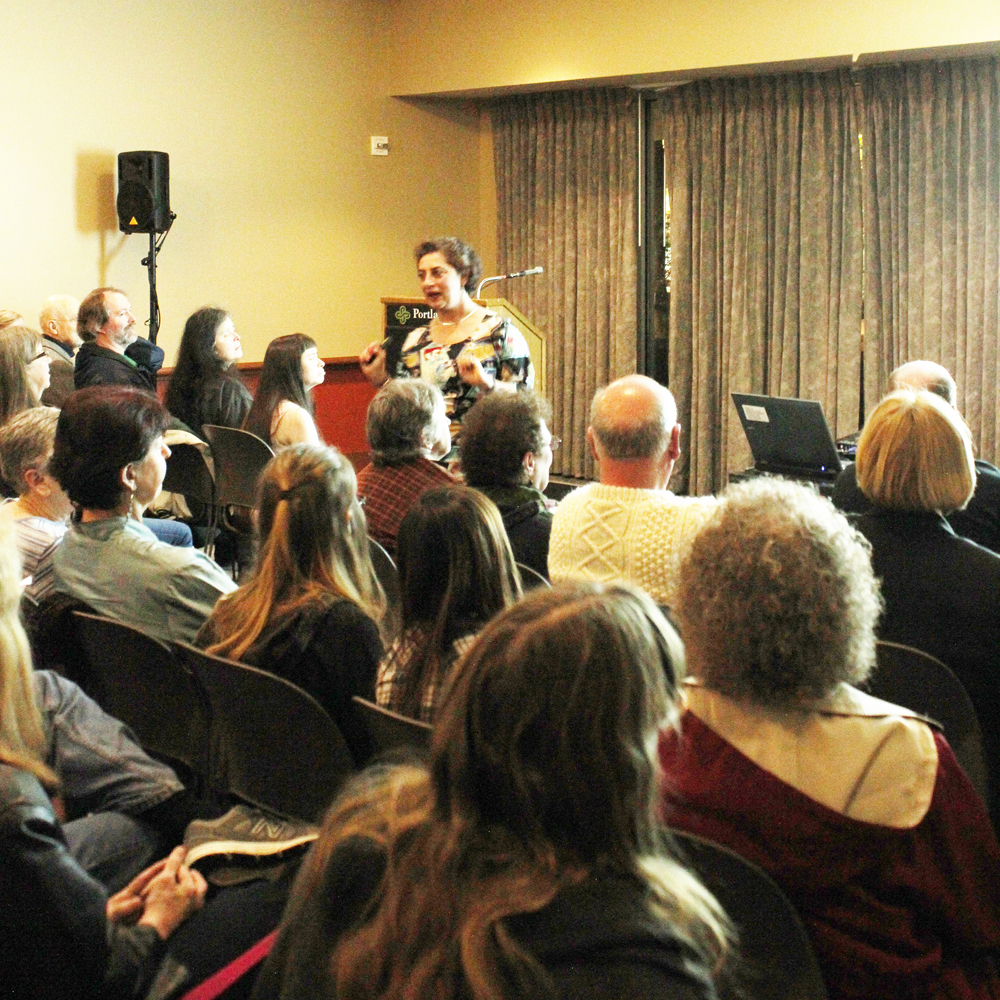How long has man’s best friend been man’s best friend?
Quite a long time, according to Dr. Salima Ikram, one of the world’s leading Egyptologists with focuses in ethnoarchaeology, archaeozoology and rock art.
On April 2, Ikram gave a lecture at Portland State titled “Burying Man’s Best Friend: Canine Catacombs in Ancient Egypt,” where she discussed the mummification and burials of our canine companions.
“Dogs, as we know, are one of the first animals to be domesticated 30,000 years ago. And they have been important in ancient Egypt, or Egyptian history, from 10,000 years ago, if not longer,” Ikram said.
Ikram was in town not only to lecture at PSU, but as part of The American Research Center in Egypt. ARCE held their 65th annual meeting last weekend at the Hilton Portland and Executive Towers hotels.
“[The Middle East Studies Center has] a long standing relationship with ARCE, sponsoring their events,” said Elly Cohen, the outreach director for PSU’s Middle East Studies Center. “They bring in big name speakers and always pack out the house.”
In the last few years, Ikram often worked at a catacomb site in Saqqara, near Memphis, Egypt. She and a team of various disciplines worked on mapping the tunnels and cataloging the sizable amount of animal mummies. Ikram estimates there are 7.5 million individual dog remains in the Saqqara catacombs.
“We work to facilitate archaeological excavation and preservation of monuments in Egypt.” said John Sarr, president of the Oregon chapter of ARCE.
Sarr, who introduced Ikram at the beginning of the lecture, described Ikram as one of his favorite Egyptologists.
“This woman appears on every other program on ancient Egypt…One of her areas of expertise is mummification, but also a specialty in animal mummification,” Sarr said.
During the lecture, Ikram talked about the process of animal mummification, which she said was very similar to the mummification of humans.
According to Ikram, internal organs are removed before the body is packed in natron, a salt and baking soda mixture which absorbs moisture. After a period of 40 days, the body and remaining organs are wrapped in linen and buried in a cool, dry place.
“The ancient Egyptians were great observers of nature,” Ikram said. “They lived in a kind of harmony with nature. But of course they did want to control it as all humans do. So the dog was a human intermediary to the rest of the animal world.”
In her archaeological work, Ikram has excavated many Egyptian burial sites and catacombs. The animal mummies she’s discovered are not limited to dogs. She has also dug up jackals, cats, monkeys, hawks and a few hogs.
She brought several pictures and charts to share with the audience. Showing examples of each, Ikram detailed the different types of
animal mummies.
Dogs were used as pets and as both hunting and social companions of the ancient Egyptians in their every day life.
Other mummified animals were intended as food for the afterlife.
Ikram noted that King Tut’s tomb had 65 food mummies. There were sacred animals and votive ones, but it can be difficult to distinguish between the two.
Ikram mentioned that all Egyptian gods had animals that were considered sacred.
“The spirit of a god can enter an animal which will be worshipped as a god,” Ikram said. She compared this transfer of divine spirits to the Dalai Lama.
Anubis, generally thought of as a Jackal-god, is one of several canine divines who might possess a dog.
Ikram stated that, in her opinion, Anubis is more likely an amalgamation of several animals such as dog, fox and jackal. Other ancient Egyptian canine gods are Wepwawet, opener of ways, and Duamutef, the son of Horus who is in charge of the stomach.
Throughout her lecture, Ikram was fairly light-hearted when talking about the lives and deaths of Egyptian pets.
“Dogs were, and still are, the quintessential pet. Cats are delightful creatures, but never excited to see you when you come home,” Ikram said. “Dogs are the only creature on this planet to love you from birth to death. Most children stop loving you around four.”




